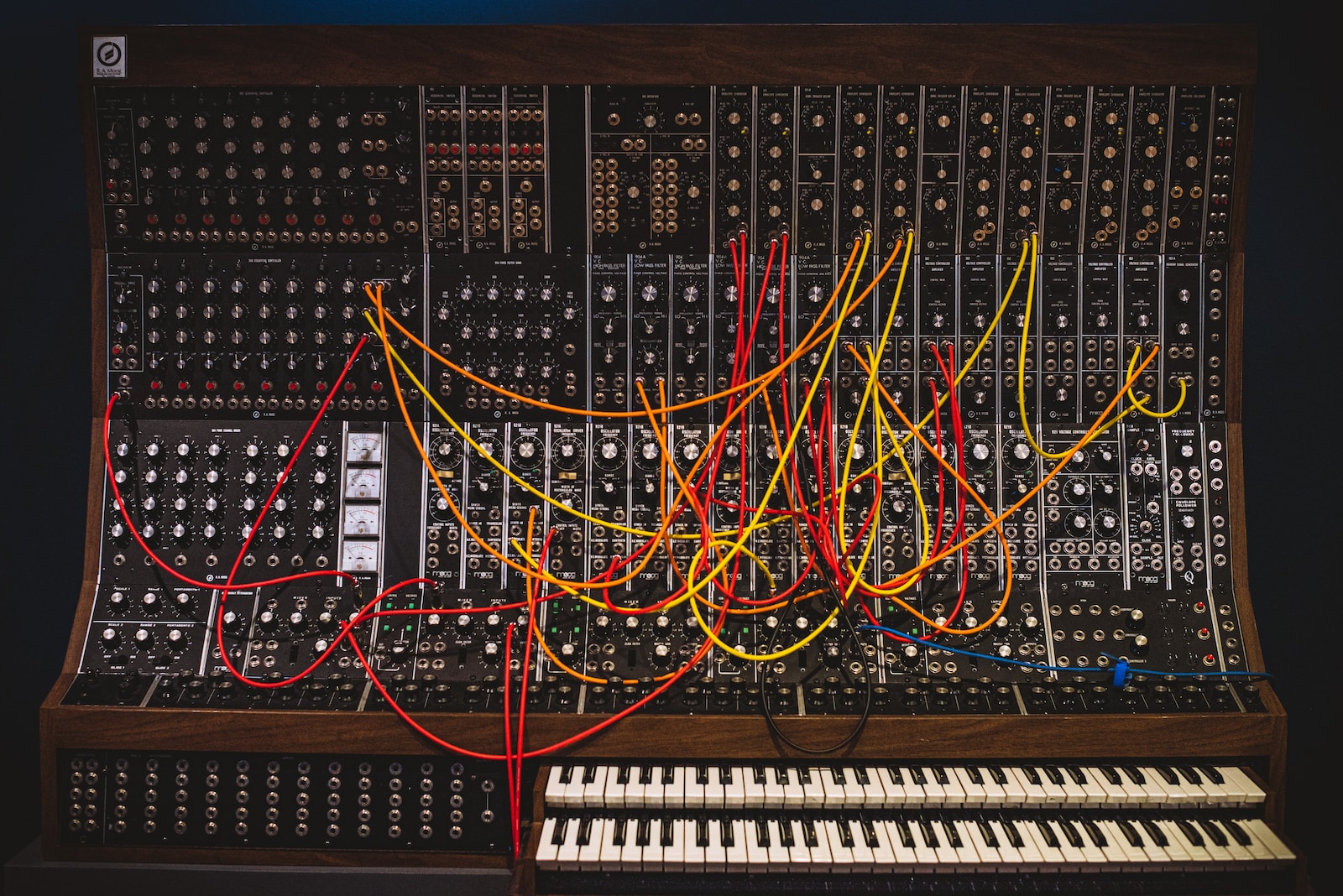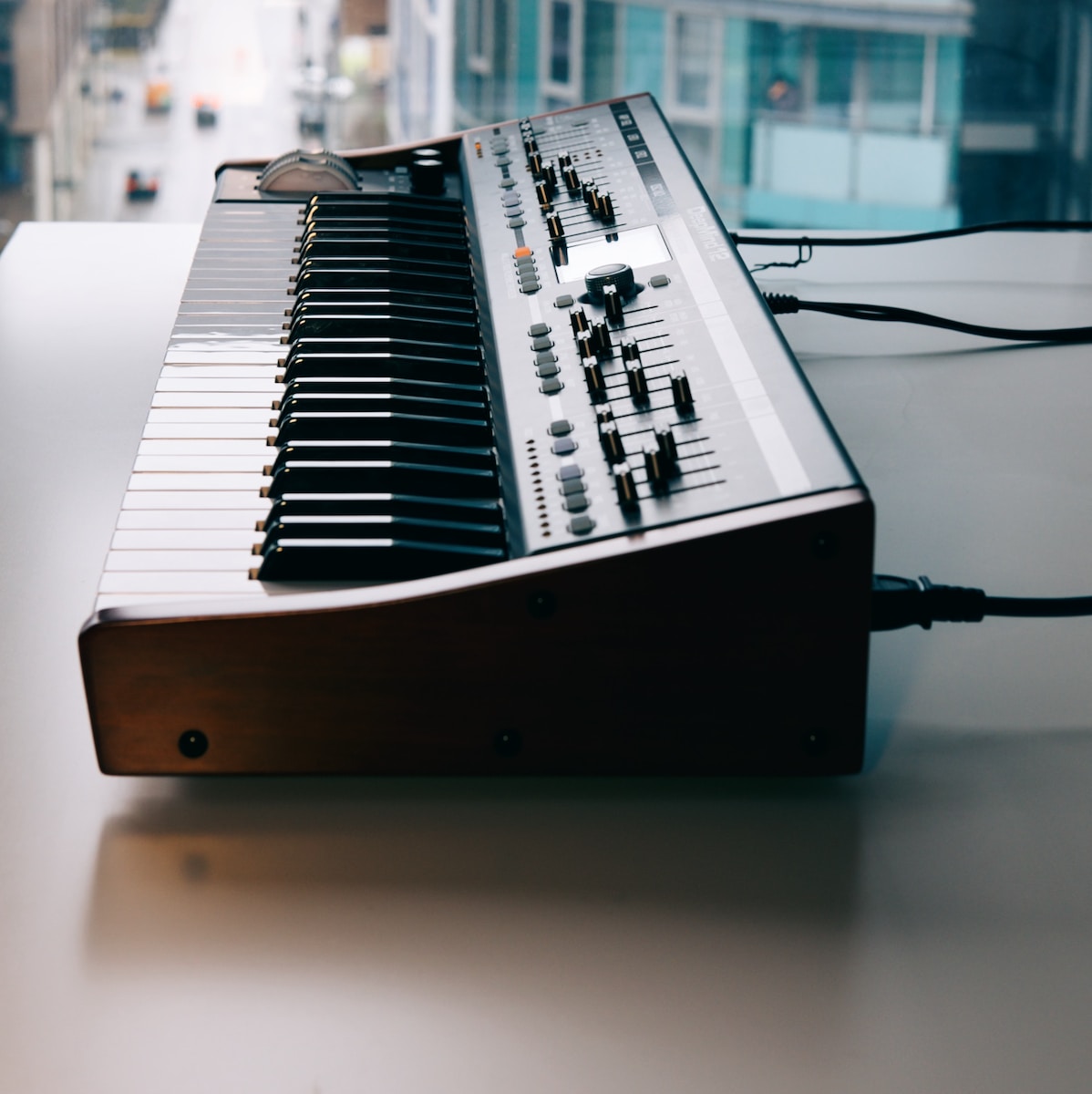Analog and digital synthesizers differ in how they produce sound and the components used in their design.

Analog Synthesizers
Analog synthesizers generate sound using analog circuits that produce electrical signals which are then amplified and output as sound. Because of the nature of their design, analog synthesizers can be sensitive to changes in temperature and voltage, and can produce unique sounds that are difficult or impossible to recreate with digital synthesizers. Examples of analog synthesizers include the Moog Minimoog, Roland TB-303, and Korg MS-20.
Advantages of Analog Synthesizers:
- Warm, rich, and organic sound: Analog synthesizers use analog circuits to generate sound, which can result in a warm, rich, and organic sound that is difficult to replicate with digital technology.
- Unique, unpredictable sound: Analog circuits can be affected by environmental factors such as temperature and humidity, which can result in unique and unpredictable sounds that can add character and interest to a composition.
- Intuitive, tactile controls: Analog synthesizers often have physical knobs, sliders, and buttons that allow users to interact with the instrument in a more intuitive and tactile way than digital synthesizers.
Disadvantages of Analog Synthesizers:
- Limited functionality: Analog synthesizers typically have fewer features and functions than digital synthesizers, which can limit their versatility and flexibility.
- More expensive: Analog synthesizers are often more expensive than digital synthesizers due to the cost of manufacturing and sourcing the analog components.
- Sensitive to environmental factors: As mentioned above, analog circuits can be affected by temperature and humidity, which can result in changes to the sound of the instrument over time.
Analog synthesizers are often favored by musicians and producers who value the warmth, character, and unpredictability of analog circuits. They are commonly used in genres such as electronic music, funk, and jazz, and are often associated with classic sounds from the 70s and 80s. Musicians and producers who prefer to create their sounds from scratch or who value the tactile controls and hands-on approach of analog synthesizers often choose analog synthesizers over digital ones.

Digital Synthesizers
Digital synthesizers, on the other hand, generate sound using digital signal processing (DSP) algorithms that simulate analog circuits. Digital synthesizers are capable of producing a wide range of sounds, from classic analog synth sounds to more complex and modern digital sounds. Because they are digital, digital synthesizers can also be updated and upgraded over time, and can be more stable and consistent in their sound than analog synthesizers. Examples of digital synthesizers include the Yamaha DX7, Korg M1, and Native Instruments Massive.
Advantages of Digital Synthesizers:
- Versatility and flexibility: Digital synthesizers can produce a wide range of sounds and textures, and often have advanced features such as built-in effects, advanced modulation capabilities, and preset libraries.
- Stable and consistent sound: Because digital synthesizers use digital signal processing (DSP) algorithms to generate sound, they are less affected by environmental factors and can produce a more stable and consistent sound over time.
- Affordable: Digital synthesizers are often more affordable than analog synthesizers, making them accessible to a wider range of musicians and producers.
Disadvantages of Digital Synthesizers:
- Cold or sterile sound: Some musicians and producers find that digital synthesizers can lack the warmth and character of analog synthesizers.
- Less tactile controls: Digital synthesizers often use menus and submenus to access features and functions, which can make them less tactile and intuitive to use than analog synthesizers.
- Limited by technology: Digital synthesizers are limited by the technology used to create them, which can make it difficult or impossible to replicate the unique sounds and textures of analog synthesizers.
Digital synthesizers, on the other hand, are often favored by musicians and producers who value versatility, affordability, and the convenience of digital technology. They are commonly used in genres such as pop, hip hop, and electronic dance music (EDM), and are often associated with modern, cutting-edge sounds. Musicians and producers who prefer to use presets or who require advanced features such as built-in effects, arpeggiators, and modulation capabilities often choose digital synthesizers over analog ones.










































































































